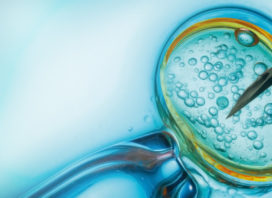Ovulation Induction
During regular menstrual period, an egg matures within a follicle (a fluid-filled cyst in the ovary that contains the egg) and is released from the follicle (ovulated). Ovulation induction is the use of specific fertility medications to stimulate the female reproductive system to produce mature eggs in the ovaries and release them. It is used in women: • who are likely to have ovulatory dysfunction presented by irregular menstrual (oligo-ovulatory) cycles or no menstrual periods (amenorrhea or anovulation), • without ovulatory dysfunction, so as to stimulate the ovaries to produce more than one egg per cycle leading to the release of multiple eggs (Controlled Ovarian Stimulation – COS) in order to increase pregnancy rates with various assisted reproduction treatments. COS is also an important part of most IVF treatment.
Virtification
Vitrification involves the transformation of a liquid to a glassy solid i.e., without the formation of crystals during the cooling process. Vitrification is an advanced cell-freezing technique, which allows a higher survival rate after thawing due to the fact that high concentrations of cryoprotectors are used along with reduced volumes and timings. Thus, the formation of intracellular ice crystals is prevented, which are responsible, in most cases, for provoking irreparable cell damage. The vitrification process is used to freeze oocytes or embryos and it guarantees a survival rate of more than 80%. This technique enables the vitrified oocytes which have survived the thawing process to have similar attributes to fresh ones. They are then able to be fertilized by the spermatozoa. The generated embryos can then be implanted and developed into healthy children. Although the implantation rate is lower than with fresh embryos, frozen embryos, once thawed, achieve a normal pregnancy.










